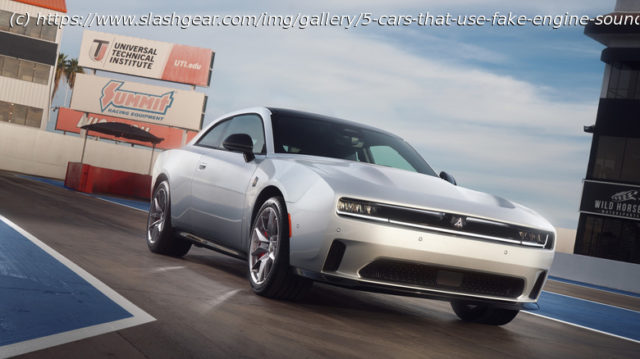Feedback is important, whether it’s your phone subtly vibrating while you type or a car making fake engine noises while you drive, like these.
Whether it’s legal concerns or making enthusiasts feel more at home, fake engine noises serve multiple purposes and are prominently featured on a wide array of makes and models. Typically on EVs and high-performance cars with otherwise underwhelming audio signatures, the general logic behind these noises is often one of either immersion, safety, or both. These artificially created or enhanced noises may be one of the most divisive automotive trends in recent years, with some stating that it’s essentially tricking owners and passengers into thinking the car is something that it’s not.
However, fake engine sounds do serve a specific purpose on some cars, namely in alerting pedestrians to the car’s state of motion. Take an all-electric car, for instance; such a vehicle produces no engine noise when at rest, obviously. Moreover, it can move instantly with no warning since electric motors produce maximum torque from a standstill.
The fake noises themselves come from a variety of sources. Common sense dictates, of course, that an EV cannot produce combustion engine noises; in those cases, the sounds are just artificially generated or pre-recorded, like a video game. In other cars, like several performance BMWs, for example, the sound instead comes from inputs within the engine itself, like plugging a guitar into an amplifier. The sound usually plays through the car’s speakers, leading some to manually deactivate it, whereas EVs sometimes play sound via external speakers mounted where the exhaust would be. Polarizing and irritating to some as they may be, a huge variety of models still utilize this technology. Some sound powerful, others subdued, and some just plain sound weird. Let’s explore some examples, how the different systems all work, and what practical benefits and detriments each have.Active Sound Design: BMW i8
This wild-looking exotic represents one of the most distinctive BMWs of the 21st century, featuring butterfly doors, all the usual appointments befitting a German luxury car, and a 369-horsepower combined output, all wrapped up in a compact, sporty package. While no longer in production today, the BMW i8 utilizes all the contemporary technology one would expect of such a vehicle, including a hybrid-electric powertrain with a relatively small 1.5L turbocharged three-cylinder engine that, on its own, still produces a respectable noise. However, like many BMWs, the i8 isn’t exactly loud on the inside and, likely in an effort to appeal to the sportier target demographic, features a little extra „push“ by the company’s Active Sound Design system.
This system is found in a wide variety of BMW models, typically M-spec cars such as the M5, M240i, the X-series M crossovers and SUVs, and so on. As such, it’s inferred that this helps bring out the car’s sportier image without sacrificing on the luxury; for instance, in a BMW so-equipped, you’ll find various settings for the Active Sound Design. These include modes for sportier or more laid-back experiences, allowing the user to essentially tailor which experience they want, in theory. Likewise, this sound is projected outside the car to offset the ever-quieter exhaust note, and the i8 is no exception here. In fact, it features a dedicated speaker just for this very purpose: to enhance the car’s outside audio and make it sound sportier than a small inline-three. Moreover, it features pedestrian warning speakers in EV mode to let pedestrians know the car is there, something we’ll see a lot of with other cars on this list.






